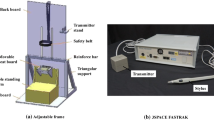Abstract
Scientific literature has described that a significant body weight increase in schoolchildren occurs during some holiday periods (summer, winter, and thanksgiving holidays), harming their health. In this regard, it is thought that this phenomenon is mainly due to changes in eating habits and the variation in levels of physical activity; however, this approach has not yet been explored during national holidays (NAH) in Chile.
Purpose
To determine any changes in body composition, physical activity and caloric intake during NAH.
Methods
A total of 46 schoolchildren (24 boys, age 10.5 ± 0.5; BMI 21.7 ± 4.7) participated. Measurements were performed 2 days before and after the NAH (9 days). Weight was measured and fat percentage was established using the Slaughter formula. Levels of physical activity were measured with accelerometers, validating 3 weekdays and 1 weekend; caloric intake was established through a 24-h recall.
Results
Weight, percentage of fat and caloric intake increased significantly (250 g, 2.2 % and 733.3 kcal, respectively; p < 0.05); however, none of the variables of physical activity showed significant changes.
Conclusion
The change in caloric intake seems to be the main cause of weight and fat gain during the NAH.
Similar content being viewed by others
References
Janssen I, Leblanc AG (2010) Systematic review of the health benefits of physical activity and fitness in school-aged children and youth. Int J Behav Nutr Phys Act 7:40. doi:10.1186/1479-5868-7-40
Sassi F (2010) Obesity and the economics of prevention: fit not fat. OECD Publ. doi:10.1787/9789264084865-en
Ferreira de Moraes ACF, Guerra PH, Menezes PR (2013) The worldwide prevalence of insufficient physical activity in adolescents; a systematic review. Nutr Hosp 28:575–584. doi:10.3305/nh.2013.28.3.6398
Cuzzocrea F, Larcan R, Lanzarone C (2012) Gender differences, personality and eating behaviors in non-clinical adolescents. Eat Weight Disord 17:282–289. doi:10.1007/BF03325139
Potter CM, Ulijaszek SJ (2013) Predicting adult obesity from measures in earlier life. J Epidemiol Community Health 67:1032–1037. doi:10.1136/jech-2012-201978
Moreno JP, Johnston CA, Woehler D (2013) Changes in weight over the school year and summer vacation: results of a 5-year longitudinal study. J Sch Health 83:473–477. doi:10.1111/josh.12054
Hull HR, Radley D, Dinger MK, Fields DA (2006) The effect of the Thanksgiving holiday on weight gain. Nutr J 5(29):1–6. doi:10.1186/1475-2891-5-29
Cristi-Montero C (2012) Are weight gain prevention program effective in schools? Rev Int Med Cienc Act Fís Deporte 12:287–298
Ernersson A, Nystrom FH, Lindström T (2010) Long-term increase of fat mass after a four week intervention with fast food based hyper-alimentation and limitation of physical activity. Nutr Metab (Lond) 7:1–9. doi:10.1186/1743-7075-7-68
Baranowski T, O’Connor T, Johnston C, Hughes S, Moreno J, Chen T et al (2014) School year versus summer differences in child weight gain: a narrative review. Child Obes 10:18–24. doi:10.1089/chi.2013.0116
Cole TJ, Bellizzi MC, Flegal KM, Dietz WH (2000) Establishing a standard definition for child overweight and obesity worldwide: international survey. BMJ 320:1240–1243. doi:10.1136/bmj.320.7244.1240
Cruz JRA, Armesilla MDC, de Lucas AH (2009) Body composition assessment in sports medicine. Statement of Spanish group of kinanthropometry of Spanish Federation of Sports Medicine. Archivos de medicina del deporte 26:166–179
Slaughter M, Lohman T, Boileau R, Horswill C, Stillman R, Van Loan M et al (1988) Skinfold equation for estimation of body fatness in children and youth. Hum Biol 60:709–723
Alhassan S, Lyden K, Howe C, Kozey-Keadle S, Nwaokelemeh O, Freedson PS (2012) Accuracy of accelerometer regression models in predicting energy expenditure and METs in children and youth. Pediatr Exerc Sci 24:519–536
Salvador Castell G, Serra-Majem L, Ribas-Barba L (2015) What and how much do we eat? 24-hour dietary recall method. Nutr Hosp 26:46–48. doi:10.3305/nh.2015.31.sup3.8750
Gillis L, McDowell M, Bar-Or O (2005) Relationship between summer vacation weight gain and lack of success in a pediatric weight control program. Eat Behav 6:137–143. doi:10.1016/j.eatbeh.2004.08.002
Lindström T, Kechagias S, Carlsson M, Nystrom FH, Fast Food Study Group (2011) Transient increase in HDL-cholesterol during weight gain by hyperalimentation in healthy subjects. Obesity (Silver Spring) 19:812–817. doi:10.1038/oby.2010.190
Kechagias S, Ernersson A, Dahlqvist O, Lundberg P, Lindström T, Nystrom FH, Fast Food Study Group (2009) Fast-food-based hyper-alimentation can induce rapid and profound elevation of serum alanine aminotransferase in healthy subjects. Gut 57:649–654. doi:10.1136/gut.2007.131797
Erlingsson S, Herard S, Dahlqvist Leinhard O, Lindström T, Länne T, Borga M, Nystrom FH, Fast Food Study Group (2009) Men develop more intraabdominal obesity and signs of the metabolic syndrome after hyperalimentation than women. Metabolism 58:995–1001. doi:10.1016/j.metabol.2009.02.028
Astrand O, Carlsson M, Nilsson I, Lindström T, Borga M, Nystrom FH, Fast Food Study Group (2010) Weight gain by hyperalimentation elevates C-reactive protein levels but does not affect circulating levels of adiponectin or resistin in healthy subjects. Eur J Endocrinol 163:879–885. doi:10.1530/EJE-10-0763
Lobos L, Leyton B, Kain J et al (2013) Evaluation of an education intervention for childhood obesity prevention in basic schools in Chile. Nutr Hosp 28:1156–1164. doi:10.3305/nh.2013.28.4.6588
Verstraeten R, Roberfroid D, Lachat C et al (2012) Effectiveness of preventive school-based obesity interventions in low- and middle-income countries: a systematic review. Am J Clin Nutr 96:415–438. doi:10.3945/ajcn.112.035378
Silva P, Seabra A, Saint-Maurice P et al (2013) Physical activity intensities in youth: the effect of month of assessment. Ann Hum Biol 40:459–462. doi:10.3109/03014460.2013.788211
Acknowledgments
We thank the participants in the present study.
Author information
Authors and Affiliations
Corresponding author
Ethics declarations
Conflict of interest
The authors declare that they have no conflict of interest.
Ethical approval
The study was conducted in accordance with international ethical standards for research involving human subjects of the current Declaration of Helsinki of 1964 (last modified in 2013) and was approved by the local ethics committee. Previously attached document.
Informed consent
A meeting was held with the guardians of the schoolchildren, and they were informed about the objectives and procedures of the study. A signed consent for the participation of their children was required.
Rights and permissions
About this article
Cite this article
Cristi-Montero, C., Munizaga, C., Tejos, C. et al. Variations of body composition, physical activity and caloric intake in schoolchildren during national holidays. Eat Weight Disord 21, 251–255 (2016). https://doi.org/10.1007/s40519-015-0229-5
Received:
Accepted:
Published:
Issue Date:
DOI: https://doi.org/10.1007/s40519-015-0229-5




